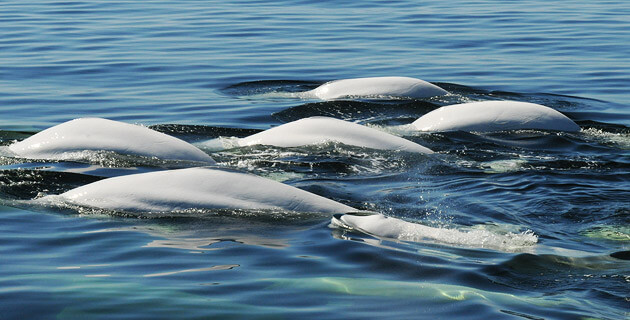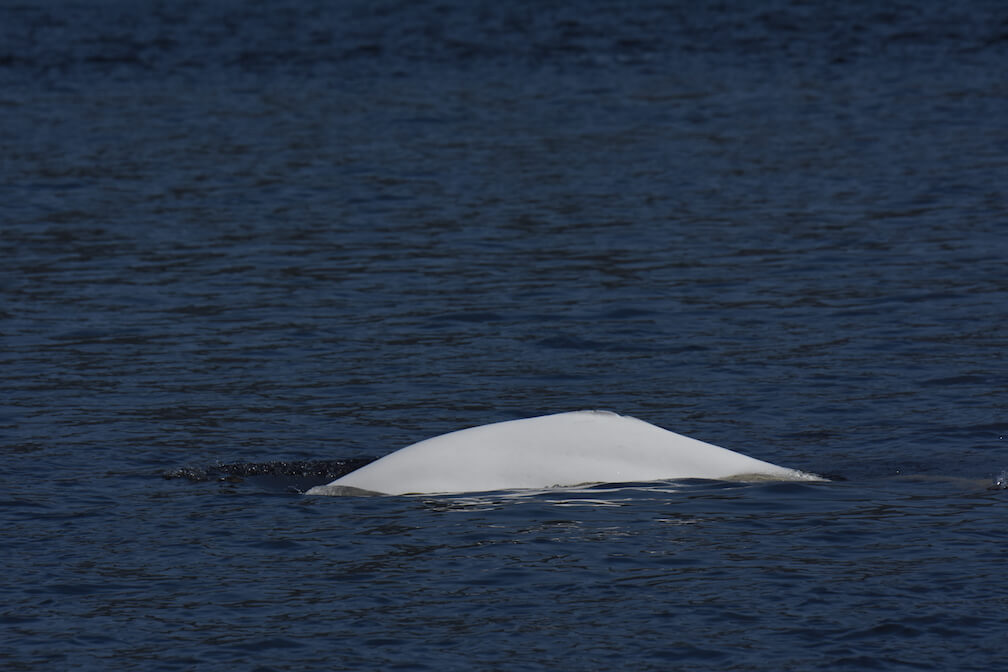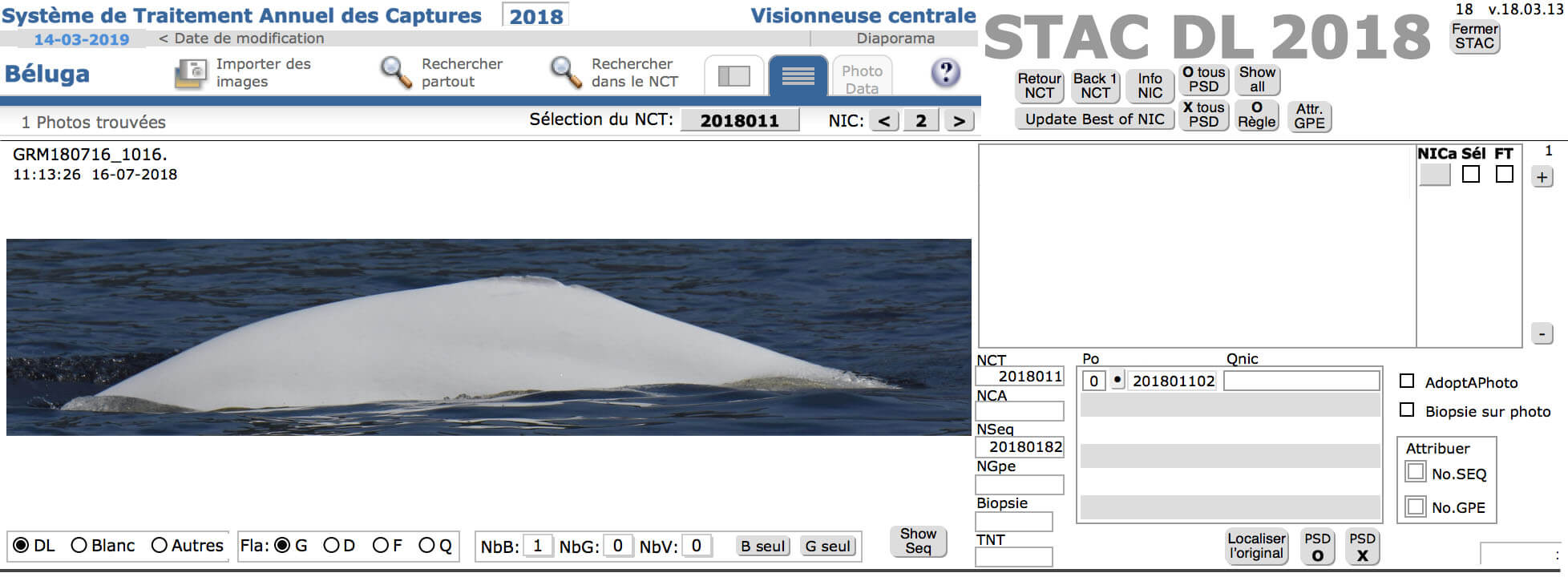One of the pillars of the research conducted at the Group for Research and Education on Marine Mammals(GREMM) is photo-identification. For over 30 years, GREMM has been collecting valuable photos to track the stories of individual belugas, as well as the history of the St. Lawrence population at large. Photo-identification goes well beyond simply recognizing a given individual. For example, observations of females with young provide information on the animals’ reproductive rates. The location and frequency of observations of an individual also provide a better understanding of the attachment that beluga communities exhibit toward a given territory. It is thanks to these individual records that the data we have at our disposal are so rich.
Between “clicks” and the photo’s entry into the catalogue containing all the belugas known to our team, the path taken by each photo follows a very specific procedure. What follows is a brief summary of this procedure, from photo to identification.
Photo collection and management
After a day out at sea, GREMM’s two research boats, Bleuvetand BpJAM, return to the Tadoussac docks. Photos taken throughout the day will all be named, dated and stored at the research station located on the second floor of the Marine Mammal Interpretation Centre. After pre-processing, research assistants begin by carefully reframing each photo to reduce the pixel load and to “standardize” each image, which will facilitate comparison. All photos are then sent to Marie-Hélène D’Arcy, senior technician and team leader for beluga pairing.
Photo description and pre-identification
Unlike many other offshore sampling techniques, we do not reject any “bycatch” until a thorough analysis of each capture is performed. In other words, even blurry photos will be examined before being discarded. For each photo, Marie-Hélène will provide the following details:
- presence of beluga(s) and/or other species
- which flank is visible (left or right)
- number of individuals
- colour of the individuals (white, grey, calf)
- presence of newborns or bleuvets (young between 1 and 3 years old)
In parallel with this step, Marie-Hélène will make an initial identification of known belugas using her sharp eye and twenty years of experience. This allows us to quickly share the latest news regarding our star belugas!
Capture
Never fear, no belugas are placed in captivity. Rather, “capture” is a term that means a beluga has entered the system. A contact identification number (CIN) (“contact” here meaning an encounter with a beluga group) is assigned to each individual that shows enough distinctive traits to be recognized again. The first 4 numbers of the code will be the year, the next 3 the contact number, and the last 2 the individual’s unique ID number. The beluga present in our photo is now identified as follows: 2018(year)_011(contact)_02(ID number).
Qualification and codification
Lastly, just like the playoffs of many sports, any individuals that could not be pre-identified in the first round will have to go through the “qualifications” round. Thanks to a set of photos of a capture (CIN), this step is performed for each flank according to four main factors: distinctive characters (spots, markings, deformities, break in the dorsal line), portions visible, quality of the capture and angle.
We are often asked if a software program is used to make the match. The answer is no, but we do have a computer tool that saves us from having to compare the beluga to700others. For each flank, Marie-Hélène will carefully cut out the individual as per the following diagram.
L’ensemble des traits distinctifs cochés crée un «code barres» unique au béluga photographié. Ce code barres sera comparé à ceux des bélugas déjà présents au catalogue.
Taken together, all the checked off distinctive features create a unique “bar code” for each photographed beluga. This bar code will be compared to those belugas already in the catalogue.
Easy, right? Not quite… Find out why in next week’s Field Notes!









